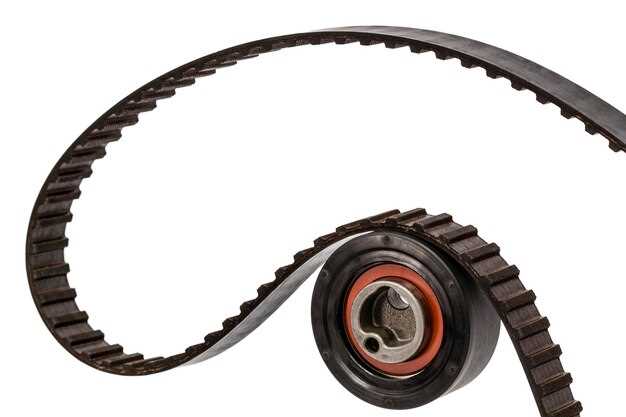
The timing belt is a crucial component of your vehicle’s engine, ensuring that the crankshaft and camshaft operate in perfect harmony. This synchronization is essential for the engine to run smoothly and efficiently. Over time, the timing belt can wear down, leading to potential engine damage if not replaced in a timely manner.
Failure to replace a worn or damaged timing belt can result in catastrophic consequences. When the belt breaks, the engine’s internal components can collide, causing significant damage that could require expensive repairs or even a complete engine replacement. Regular inspections and timely replacements of the timing belt are vital practices for maintaining your vehicle’s health and performance.
Understanding the timing belt’s function and the risks associated with neglecting its maintenance is essential for any car owner. By prioritizing timing belt replacement, you can prevent unnecessary damage and ensure the longevity of your vehicle. In this article, we will discuss the importance of the timing belt, warning signs of wear, and when to schedule a replacement to protect your investment.
Timing Belt Replacement: Why It Matters for Your Car

The timing belt is a crucial component that ensures the engine’s internal parts operate in perfect harmony. Over time, this belt can wear out or become damaged, leading to potentially catastrophic consequences for your vehicle’s engine. Regular replacement of the timing belt is essential to maintain optimal engine performance and prevent severe mechanical failures.
Failure to replace a worn or frayed timing belt can result in the belt breaking, which may cause the engine’s pistons and valves to collide. This collision can lead to extensive damage that requires costly repairs or even complete engine replacement. By proactively replacing the timing belt at recommended intervals, you can avoid these expensive consequences and ensure the longevity of your car.
Overall, a timely timing belt replacement is not just a maintenance task; it is a critical safeguard for your engine’s integrity. Ignoring the condition of your timing belt could lead to significant downtime and financial burden. Prioritizing this maintenance ensures your vehicle operates safely and efficiently, providing peace of mind on the road.
Signs That Your Timing Belt Needs Replacement

The timing belt is a crucial component of your engine, responsible for synchronizing the rotation of the crankshaft and camshaft. If the belt fails, it can lead to severe engine damage. Here are some warning signs that indicate your timing belt may need replacement:
- Engine Noise: If you hear a ticking noise coming from the engine, it could be a sign that the timing belt is worn out or loose.
- Oil Leaks: Presence of oil around the timing belt cover can indicate a failing seal that may affect the belt’s performance.
- Dashboard Warning Lights: If the check engine light is illuminated, it may suggest issues with the timing mechanism within the engine.
- Engine Misfires: A worn timing belt can cause misalignment of the camshaft and crankshaft, leading to engine misfires.
- Loss of Power: A slipping timing belt may result in decreased engine performance, resulting in noticeable loss of power during acceleration.
Regularly inspecting your timing belt and being aware of these signs can help you prevent costly repairs and keep your engine running smoothly.
The Risks of Ignoring Timing Belt Maintenance
Neglecting timing belt maintenance can lead to catastrophic damage to your engine. The timing belt plays a critical role in synchronizing the rotation of the crankshaft and camshaft, ensuring that the engine’s valves open and close at the correct times. If this essential component fails due to lack of maintenance, it can result in the pistons colliding with the valves, causing severe engine damage.
The timing of these components is crucial, and any disruption can have significant consequences. Ignoring recommended replacement intervals increases the risk of belt wear, which might not be immediately visible. As the belt deteriorates, it may develop cracks or become misaligned, leading to a breakdown. The cost of replacing a timing belt pales in comparison to the expenses incurred from extensive engine repairs caused by this oversight.
Besides direct engine damage, a failing timing belt can lead to unexpected breakdowns, stranding motorists and creating unsafe driving conditions. Regular maintenance is essential to ensure that your vehicle operates smoothly and reliably, ultimately extending the lifespan of your engine. Prioritizing timing belt care is not just about avoiding inconvenience; it’s about protecting a significant investment in your vehicle.
Steps to Ensure Proper Timing Belt Replacement
Replacing the timing belt is crucial for the proper functioning of your vehicle. To avoid potential damage, follow these steps meticulously.
1. Gather Necessary Tools and Parts: Before starting, ensure you have the correct timing belt, tensioner, and any other components necessary for your specific vehicle model. Having the right tools, such as sockets, wrenches, and a torque wrench, is also essential.
2. Disconnect the Battery: Always begin by disconnecting the battery to prevent any electrical issues while working on your vehicle.
3. Access the Timing Belt: Remove any components obstructing access to the timing belt. This may include the engine cover, crankshaft pulley, or water pump cover. Keep track of all removed parts for reassembly.
4. Align Timing Marks: Before removing the old timing belt, ensure that the engine’s timing marks are aligned correctly. This step is critical to avoid misalignment that can lead to engine damage.
5. Remove the Old Timing Belt: Carefully release the tensioner and remove the old timing belt. Check the condition of the tensioner and replace it if necessary to ensure optimal performance.
6. Install the New Timing Belt: Place the new timing belt following the manufacturer’s specifications. Ensure all timing marks remain aligned during installation to prevent engine timing issues.
7. Reassemble Components: After the new belt is installed, reattach all components previously removed. Double-check each part to ensure nothing is left loose that could cause damage.
8. Reconnect the Battery: Once everything is securely in place, reconnect the battery and prepare to start the engine.
9. Test the Engine: Start your vehicle to listen for any unusual noises. If everything runs smoothly, you have successfully replaced your timing belt without causing damage.
10. Monitor Performance: Keep an eye on your vehicle’s performance over the next few days. If you notice any issues, consult a professional mechanic to avoid any potential problems related to the timing belt installation.

